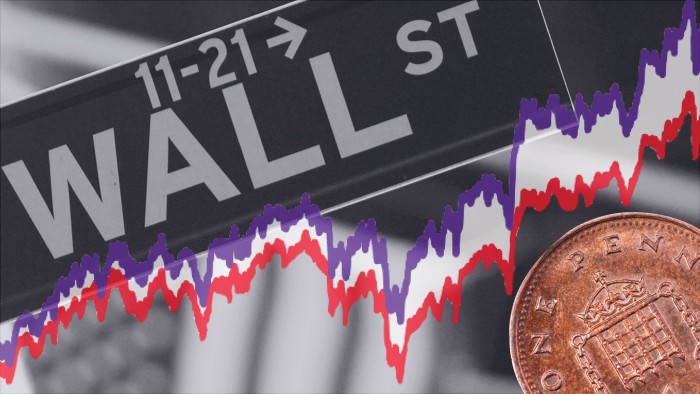Wall Street stocks bounce back after inflation scare

Simply sign up to the Equities myFT Digest -- delivered directly to your inbox.
Wall Street stocks recovered on Thursday, after being pushed lower for three consecutive sessions by fears that central banks will withdraw crisis-era support following a surge in inflation.
The S&P 500 index rose 1.2 per cent in New York, led by financial and industrial stocks sensitive to the trajectory of the economy. The gains followed a 2.1 per cent fall on Wednesday, the index’s worst one-day performance since February. The technology focused Nasdaq Composite rose 0.7 per cent, having neared correction territory on Wednesday when it closed almost 8 per cent below its record high in April.
US government debt rallied, with the yield on the benchmark 10-year Treasury sliding 0.04 percentage points to 1.65 per cent.
The S&P 500 hit a high on Friday, fuelled by optimism about a global recovery supported by central banks keeping monetary policies loose. The blue-chip benchmark then lost 4 per cent over three sessions as worries about inflation rippled through markets.
Data released on Wednesday showed US inflation rose 4.2 per cent year on year in April, with prices rising at a faster pace than economists had forecast. This increased speculation about the Federal Reserve reducing its $120bn of monthly bond purchases has helped lower borrowing costs and prop up equity valuations.
Richard Clarida, Fed vice-chair, said this week, however, that “transitory” factors related to industry shutdowns last year had pushed price rises above the central bank’s 2 per cent target but the economy remained “a long way from our goals”.
Analysts warned that market volatility would continue as investors swung from believing the Fed to fretting that its policymakers would act too late to combat inflation and then tighten financial conditions rapidly.

“We are at such an inflection point that volatility in markets is likely to be quite persistent,” said Sonja Laud, chief investment officer at Legal & General Investment Management. “Any chance of a change from the story of constantly low interest rates is going to be unsettling.”
The Vix, an index measuring implied volatility on the S&P 500 and known as Wall Street’s “fear gauge”, is running at around its highest level since early March.
“Markets are volatile because they’re not sure which sort of inflation we have at present, or what, if anything, the Federal Reserve may do to bring inflation down,” said Nicholas Colas of research house DataTrek.
Mark Haefele, chief investment officer at UBS wealth management, said the market jitters also presented an opening for traders.
“Given our view that the spike in inflation will prove transitory, and that the equity rally has further to run, investors can use elevated volatility to build long-term exposure,” he said.
In Europe, the Stoxx 600 index ended the session 0.1 per cent lower, paring a loss of 1.7 per cent earlier in the session.
International oil benchmark Brent crude dropped 3.4 per cent to $66.98 a barrel as the Colonial pipeline in the US resumed operations on Wednesday evening after being shut down last Friday by a cyber attack.
The dollar index, which measures the greenback against other big currencies, faded late in the day to trade flat.
Comments